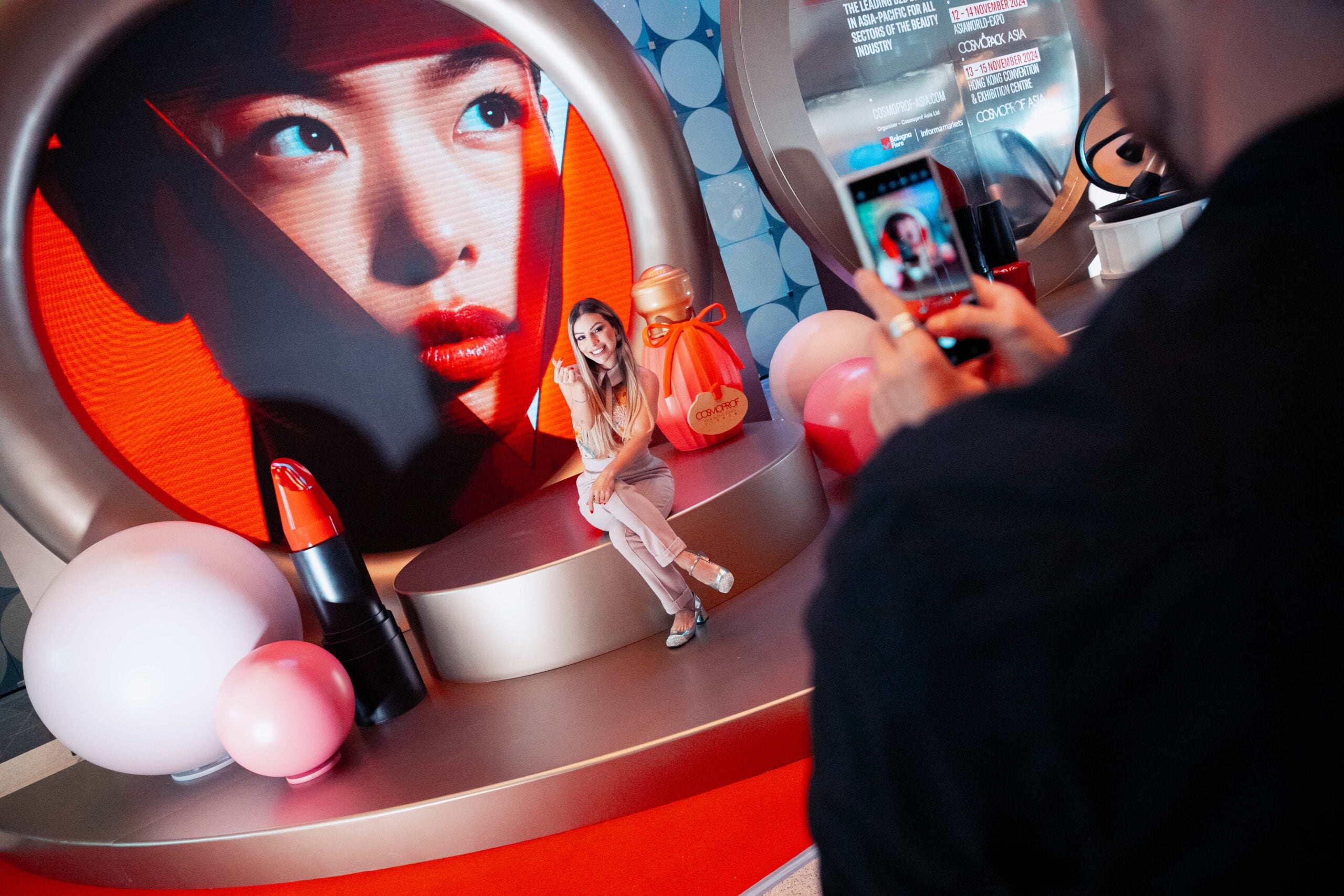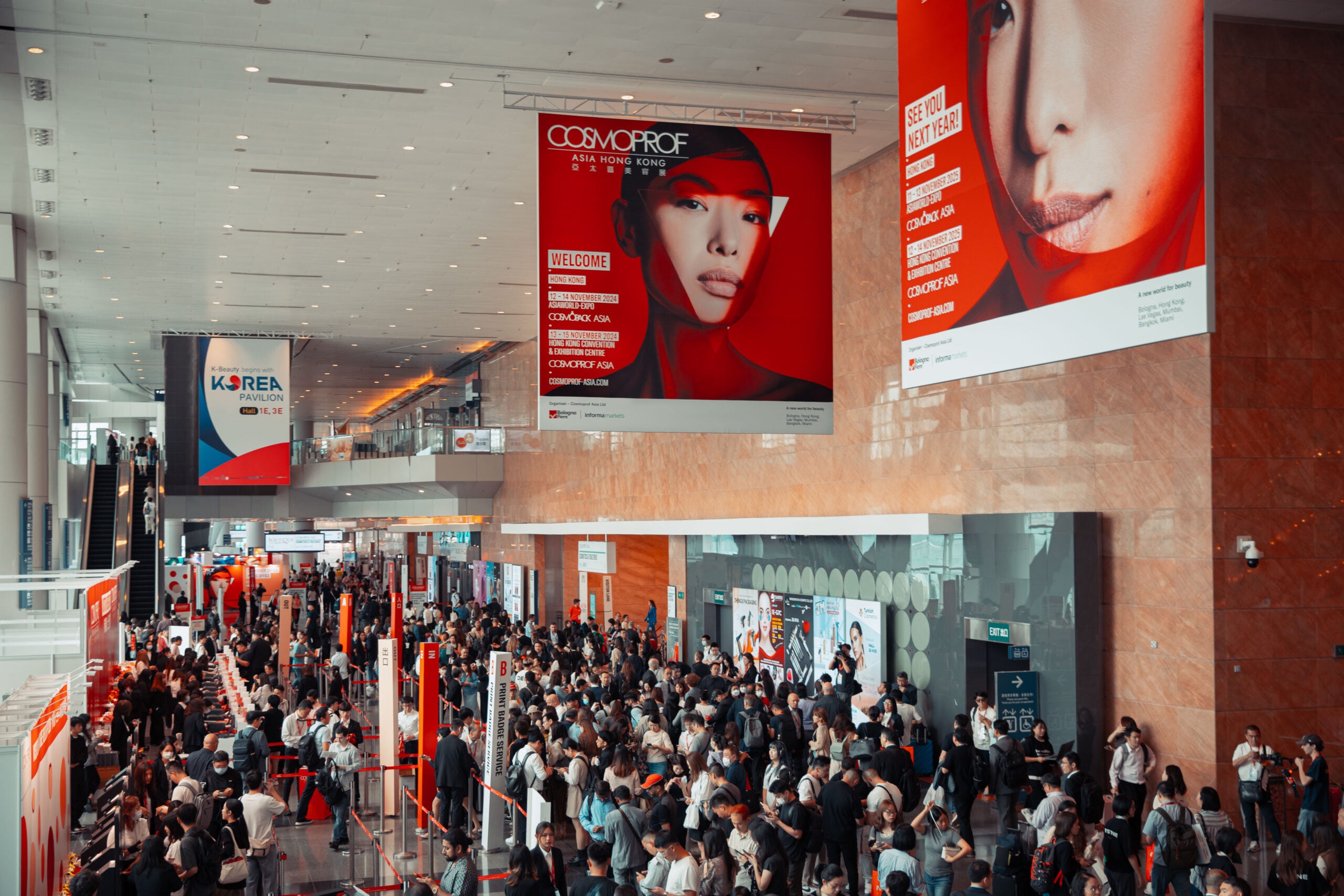The 2025 edition of Cosmoprof Asia will take place in Hong Kong between 11–14 November 2025 and is set to be a hub of beauty innovation.
We spoke to the head of international marketing at BolognaFiere Cosmoprof Francesca Donati about what’s on the agenda here, as well as the latest beauty and personal care trends that international brands need to know about in the APAC region.
Cosmetics Design (CD): What’s on the programme for Cosmoprof Asia this November? And why have you focused on these areas of innovation?
Francesca Donati (FD): The 28th edition of Cosmoprof Asia is set to impress with fresh content and projects, reflecting the trends and dynamic growth of the beauty market across the Asia-Pacific region.
A special focus will shine a spotlight on fragrances, one of the fastest-growing segments in the region. While fragrances have been part of the show before, this year they will take centre stage through a dedicated zone featuring two distinct areas: Fragrance Avenue, targeting mass-market brands, and Esplorers by Esxence, an exclusive space organised in collaboration with Esxence, the leading international event for artistic perfumery. This marks the first time ever that niche fragrance companies will be showcased at Cosmoprof Asia.
Sustainability will also be a key theme in 2025. The Be Sustainable with Beauty initiative will highlight the most innovative products and solutions across the entire supply chain — from raw materials and formulations to packaging, manufacturing, and machinery — all aimed at reducing the industry’s environmental impact. The project, curated in partnership with SGS, the global leader in product testing, certification, and safety, will recognise the most sustainable companies among Cosmopack Asia exhibitors.
Another major highlight is COSMOLAB, the immersive and interactive lab at Cosmopack Asia where companies showcase the fusion of innovation, technology, and product. The 2025 edition will feature Intercos and Meiyume as key players. United by a strategic alliance, they mark a significant step forward in Asia, combining Intercos’ formulation expertise with Meiyume’s packaging and turnkey capabilities to deliver agile, high-performance solutions.
To further expand the conversation around innovation, the show will also host the launch of BIFA – Beauty Ingredients & Formulation Asia, a brand-new event focused on ingredients and formulation. Co-located with Cosmopack Asia, BIFA brings together leading innovators and suppliers, offering a fresh platform fuelled by strong partnerships and high market demand.
CD: Are you introducing anything new or changing something at the show this year? If yes, why did you do this?
FD: We will refresh our exhibition areas to enhance the overall visitor experience and provide a clearer structure to the show. For Cosmopack Asia, there will be two distinct sub-segments: OEM/ODM & Raw Materials will focus on contract and private label manufacturing and essential raw materials, while Packaging & Machinery will highlight advancements in machinery and packaging solutions.
Cosmoprof Asia will present two new specific segments: Perfumery, Cosmetics & Nail, dedicated to trends and innovations in the fragrance and cosmetics sector; and Hair & Beauty Salon, focusing on hair care for professional and retail channels, and the professional beauty salon market. These updates aim to enhance the clarity and character of the exhibition layout, making it easier for attendees to navigate the show and connect with the most relevant business partners.
CD: What key trends and opportunities are shaping the beauty landscape in the APAC region?
FD: Consumers in the APAC region view beauty as a way to feel better and enhance their lives. Wellness is a key focus across all generations, serving as an escape from daily stress. People are increasingly seeking highly personalised products, with digital tools and AI-powered skin diagnostics gaining popularity. Brands entering this market must recognise that consumers are discerning, constantly looking for reliable information across multiple channels and embracing innovative, high-quality solutions.
Clean, sustainable products with transparent ingredient sourcing are a priority, along with easy-to-use formats that simplify daily routines. Brands are expected to act as trusted advisors by offering expert guidance and educational content.
The shopping experience is shifting towards seamless direct-to-consumer models that combine convenience with personal engagement. To succeed, brands need to deliver authenticity, exceptional quality, and foster meaningful connections with digitally savvy, wellness-focused consumers through truly personalised beauty experiences.
CD: What challenges is the APAC beauty and personal care market currently facing?
FD: The market here is rapidly changing due to socio-economic and geopolitical shifts that are redefining global trade. The APAC region should not be seen merely as a gateway to China, but as a much larger area — the second-largest beauty market in the world — which includes mature markets such as China, Japan, and South Korea, as well as fast-growing emerging markets like those in the ASEAN region.
Local brands from South Korea, Japan, and China are expanding quickly, setting high standards in innovation and quality and increasing competition for international brands. However, global players remain important by leveraging their expertise to connect with digitally savvy, wellness-oriented consumers.
Brands also face challenges such as complex supply chains, varying regulations, and growing demand for sustainability and transparency. Success requires balancing global strengths with local knowledge across diverse markets while maintaining authenticity and quality.
CD: What do you think will be important in the future in this region? What are the future trends, opportunities, and challenges here?
FD: The great attention to digital tools and devices, as well as the peculiarities in consumers’ behaviour, are still marking Asia-Pacific beauty as a cradle for innovation and technology. This attitude will undoubtedly offer new solutions in terms of product development, marketing, and distribution that will soon impact the evolution of beauty globally.
The APAC region will continue to lead in beauty innovation, driven by digital engagement and technology. To succeed, brands must address the full generational puzzle – Boomers, Gen X, Millennials, Gen Z, and Gen Alpha – offering products and experiences that meet diverse needs and attainable consumer spending levels.
Key trends will include AI-powered diagnostics, augmented reality, seamless omnichannel experiences, and a growing focus on sustainability and transparency.
Brands will need to tailor their strategies to both mature and emerging markets while navigating regulatory and supply chain challenges.
Combining technology, local insights, and inclusivity will be essential to attract and retain consumers across generations.




